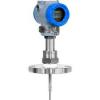




 1 votes
1 votes
Dielectric Constant Data Required For Guided Wave Radar Type Level Transmitters
 Dear All,
Dear All,One of the most important data required for specifying guided wave radar level transmitters for storage tanks is the Dielectric constant of the stored liquid in the tank.
This data is provided by process engineers. A lot of this data is available directly form various open sources form the internet. Some links are provided below:
http://www.engineeri...nts-d_1263.html
http://krohne.com/en...tric-constants/
However, Dielectric constant can be calculated as a value using refractive index values of the particular liquid. Following is the correlation between refractive index and dielectric constant
Dielectric constant = (Refractive Index)2
or
Refractive Index = (Dielectric Constant)o.5
It is important to note that the above correlation is good for non-polar liquids. As the liquid deviates from a non-polar behavior to a polar behavior, errors are observed in the values obtained.
Benzene and Toluene are examples of non-polar liquids whereas Glycerol is a polar liquid.
For petroleum distillates a quotient "I" is defined as the refractive index parameter and is related to the refractive index as follows:
I = (n2 - 1) / (n2 + 2) ---------- (1)
For petroleum fractions having an average molecular wieight below 300 the following correlation is given for the refractive index parameter:
I = 0.328*v-0.003*SG0.915---------- (2)
where:
v = Kinematic viscosity of the petroleum fraction, cSt
SG = Specific gravity of the petroleum fraction
Let us take an example for calculation of a diesel :
v = 5 cSt @storage temperature
SG = 0.85 @storage temperature
From eqn (2),
I = 0.28
From eqn (1),
(n2 - 1) / (n2 + 2) = 0.28
Evaluating "n" the refractive index from above:
n = 1.47
Dielectric constant is refractive index squared or "n2".
Hence,
Dielectric constant = 2.16 (~2.2)
Hope, process engineers who need to provide the dielectric constant for specifying "Guided Wave Radar Level Transmitters" will find this blog entry informative.
Looking forward to hear comments from the readers of my blog.
The reference for the aforementioned equations is provided below as a web link:
http://kosalmath.fil...ydrocarbons.pdf
Regards,
Ankur

 FB
FB







I love the simplicity of the relationships and appreciate your explanation. I really like guided wave radar technology and have had good luck with it, but I am left wondering if it will work with odd-ball mixtures that I can't find data about. Hopefully this will eliminate my anxiety in the future.